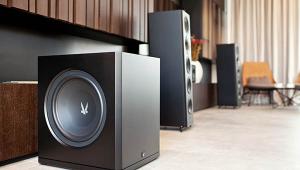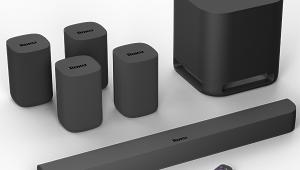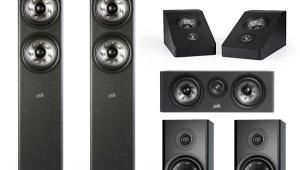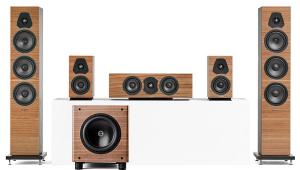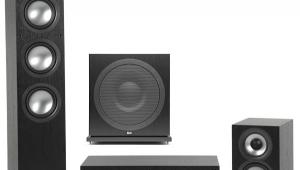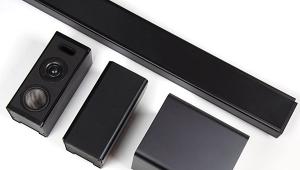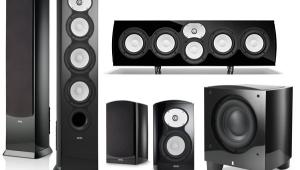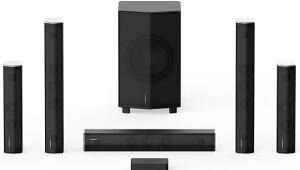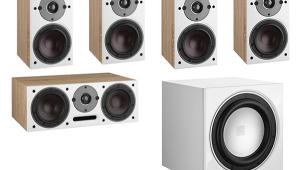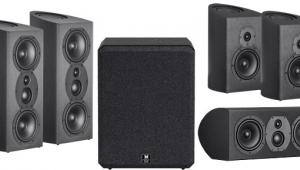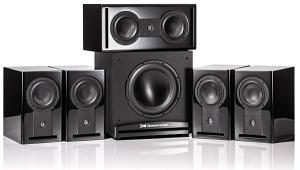Elac Uni-Fi 2.0 Surround Speaker System Review Page 2
Multichannel Performance
Even during initial casual use, I knew there was something special going on with the Elac system when my neighbors came over and we watched a few Stevie Ray Vaughn at Austin City Limits videos streamed from YouTube. Our efforts to spread out in the room and remain socially distanced prevented anyone from occupying in the sweet spot. Even so, everyone commented that the sound was lively and clear from their respective position.
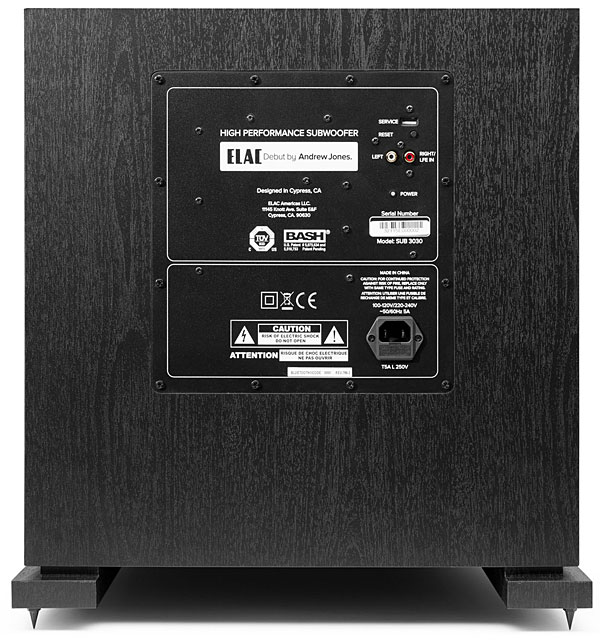
Running sweep test tones on the system, I heard usable bass from the SUB3030 down to 25 Hz. That bode well for movies, and when I watched an Ultra HD Blu-ray of District 9, the pounding percussion in chase sequences had a level of drive that seriously heightened the sense of drama. In a scene where Wikus breaks out of the compound he is being held in and is pursued by a helicopter, beating blades traversing from the rear to the front of the room were precisely rendered. And in another where Wikus and the alien Christopher break into the biolab to retrieve the black fluid necessary to power the alien ship, the initial explosion as they shot their way through the facility's wall had an impressive impact. Even through the film's many chaotic scenes like this, with alarms sounding and shots flying, fine soundtrack details such as the response-beeps of a security keypad came through clearly. The same could be said for dialogue in District 9, which shifts in a fluid manner from spoken to radio-transmitted to televised, with cutaways to expert commentary from academics tossed in. All of it was delivered with by the UC52 center channel excellent clarity, and performance remained consistent when I moved from the main viewing seat to the far side of my couch.
Like District 9, Requiem for a Dream is another great film from the 2000s to get a recent release on Ultra HD Blu-ray with a remixed Dolby Atmos soundtrack (with True-HD 7.1 core). The many scenes in the film where its striving yet hopelessly drug-addicted protagonists get high are accompanied by sizzling, whooshing sound effects as narcotics are rapidly cooked and injected, and eyes dilate in response. The Uni-Fi 2.0 system rendered these in a dynamic manner, and it also dramatically conveyed the intense, full-frequency slam of a refrigerator coming to life during hallucination sequences. The mournful massed strings of Clint Mansell's score also sounded notably full and rich on the system.
Now that I'm clearly on a nostalgia for the 2000s kick, let me add that I regret not buying more multichannel music releases when they were then arriving regularly and sold in single-disc editions. One fave is Avalon by Roxy Music, which received a solid and adventurous 5.1 remix by original engineer Bob Clearmountain for its multichannel SACD release. Listening to the track "The Space Between," I felt immersed in well-balanced sound that was detailed, but not overly bright. Bass guitar was deep-reaching and powerful, and I could easily hear separation between the lowest bass notes and the cleanly recorded kick drum.
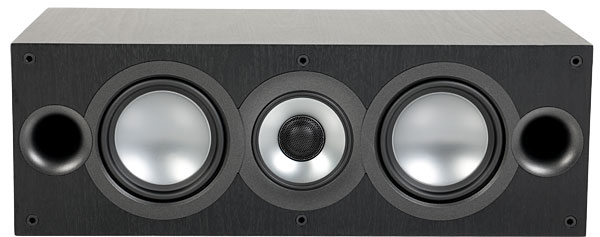
Music Performance
After moving the UF52 towers into my living room/listening room for their stereo audition, I connected them to a 2 x 150-watt Hegel Music Systems H190 integrated amplifier and mainly used Elac's own Discovery DS-S101-G server running Roon as my music source, though I played CDs as well. I set the speakers up in my typical configuration: spread wide, toed inward at the main listening seat, and positioned about two feet out from the back wall. Running test tones to fine-tune positioning, I noted bass output down to the 40Hz range, which corresponded with Elac's specs.
After hearing Elac system's handling of the Mansell score on the Requiem disc, I was eager to play more strings on the UF52 towers. Listening to Max Richter's "Mrs. Dalloway: In the Garden" from the release Three Worlds: Music from Wolf Works (24-bit/48kHz FLAC, Qobuz), I noted the same crisp/ sweet balance that I heard in the home theater. The track's winding layers of violin, viola, and cello had a clean, lively presentation that never once sounded aggressive. Imaging was solid, with the instruments spread wide across the soundstage in a realistic manner.
Listening next to Hudson's jazzed-up rendition of Joni Mitchell's "Woodstock" (24/44.1 FLAC, Qobuz), transients such as electric guitar leads and ride cymbal hits had a vivid presence, while the piano in John Medeski's solo had a simultaneously detailed and liquid quality. The standup bass sounded taut and well-defined, with the Elac towers providing enough low-end to provide a sense of the instrument's body and presence in space.
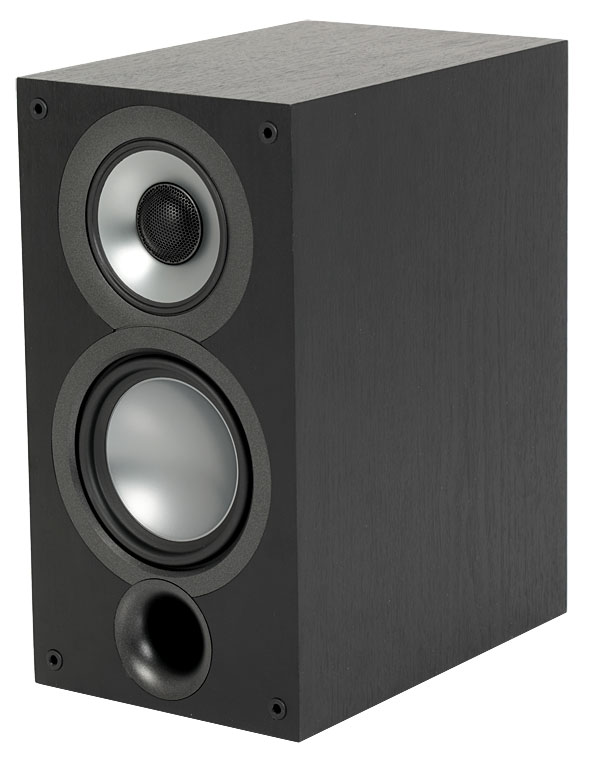
Wrapping up critical listening, I streamed Aimee Mann's "Goose Snow Cone," from her most recent album Mental Illness (16/44.1 FLAC, Tidal). The swirling bells that open the song had a near 360-degree arc. Mann's dry vocals came across perfectly centered in the mix, and the extremely wide soundstage the speakers presented placed the song's dual guitars out beyond the horizontal boundaries of the speakers. I did sense a slight leanness to Mann's vocals in comparison with the JBL HDI-3600 tower speakers that the UF52s replaced in my room, which seemed to flesh out more midrange detail for a dewier, richer sound. But at $3,800, the HDI-3600s cost more than three times what you'll pay for a pair of UF52s, so the difference was hardly a showstopper.
Conclusion
Like other budget speaker packages Sound & Vision has recently tested such as the Paradigm Monitor SE Series, this Elac Uni-Fi 2.0 system keeps things basic in order to hit a certain price point. But having no prior listening experience with the company's speakers outside of the fancy (for Elac) Navis ARB-51 powered bookshelf model, I'm truly impressed with what Andrew Jones has achieved with this 2.0 version of the Uni-Fi Series. Its sound came across as consistently clean and dynamic whether I was hitting it hard with action movie soundtracks or playing music. And I loved Elac's user-friendly Subwoofer Control app with its effective and easily implemented Auto-EQ process. At $3,000 total for a full 5.1 system, this Elac rig is a strong contender in the affordable-speaker space and easy to recommend.
